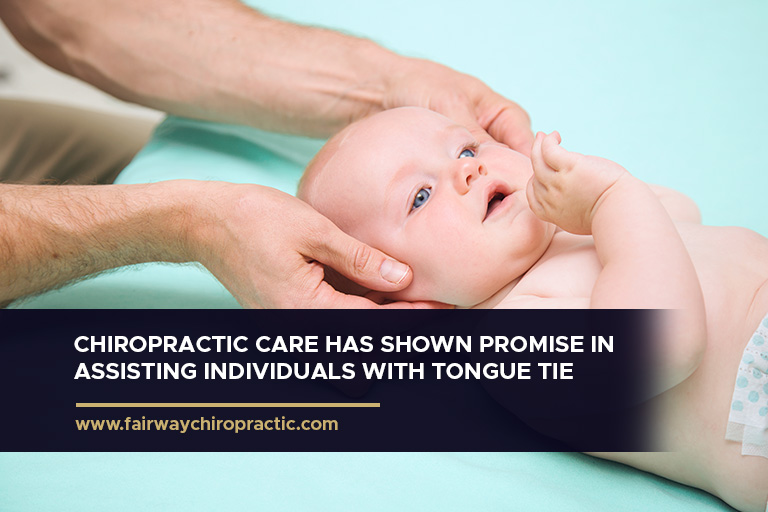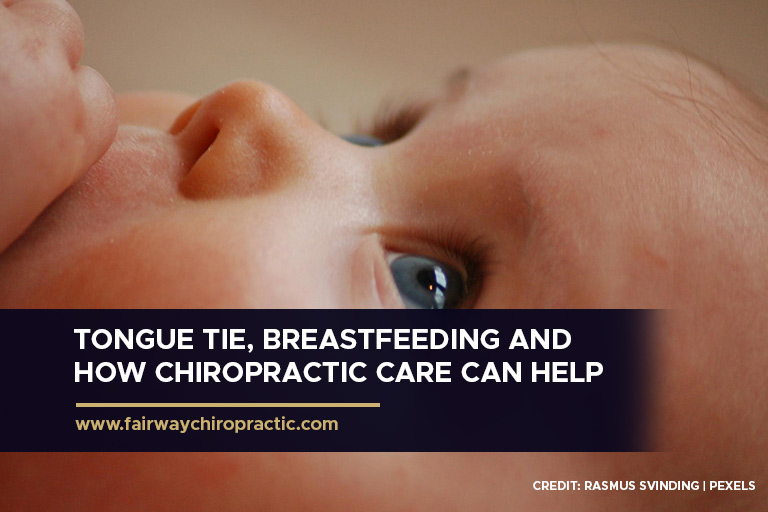Tongue tie, a condition formally known as ankyloglossia or TOTs (Tethered Oral Tissues), affects individuals from infancy, potentially influencing feeding, speech, and oral development. Characterized by a restrictive lingual frenulum, the condition can lead to a range of complications, including difficulty breastfeeding and colic in infants and speech challenges in older children and adults. Beyond traditional medical interventions, chiropractic care emerges as a supportive treatment, offering a holistic approach to alleviating associated symptoms and promoting overall oral and physical health.
Understanding Tongue Tie

Tongue tie, or ankyloglossia, represents a condition present from birth that restricts the tongue’s range of motion due to an unusually short, thick, or tight lingual frenulum, the band of tissue connecting the bottom of the tongue to the floor of the mouth. This condition can influence various aspects of oral health and functionality, from feeding patterns in infants to speech and oral hygiene in older children and adults. Understanding the causes and recognizing the signs and symptoms of tongue tie are crucial steps in managing and treating this condition effectively.
Causes
The precise causes of tongue tie remain somewhat unclear, with research pointing towards genetic factors as a significant contributor. It’s observed that tongue tie can run in families, suggesting a hereditary predisposition. During the development of a fetus, the lingual frenulum forms and typically recedes to allow more free tongue movement. In cases of tongue tie, this frenulum does not recede enough, remains too thick, or is too short.
While genetic factors are notable, there are no specific environmental or maternal factors during pregnancy firmly linked to the increased risk of tongue tie.
Signs and Symptoms
The signs and symptoms of tongue tie vary depending on the age of the individual and the severity of the condition. Early detection, especially in infants, is crucial as it can affect breastfeeding efficiency and the nutritional well-being of the child.
In Infants:
- Difficulty Breastfeeding: One of the most immediate and noticeable signs of tongue tie in infants is trouble latching onto the breast, which can lead to poor feeding, insufficient weight gain, and distress during feeding times for both the infant and the mother.
- Restricted Tongue Movement: The tongue’s limited range of motion may be noticeable when the infant cries or attempts to stick out their tongue.
- Colic or Excessive Gassiness: These issues may arise from the infant’s inability to form a proper seal during breastfeeding, leading to excessive air swallowing.
In Older Children and Adults:
- Speech Difficulties: Tongue tie can cause articulation problems, making it challenging to pronounce certain sounds or words clearly.
- Dental Issues: Difficulty in cleaning the teeth properly due to limited tongue movement can lead to increased risk of periodontal issues. Additionally, a gap between the front teeth may develop.
- Eating Challenges: Older children and adults might find it difficult to manage certain textures or types of food due to restricted tongue mobility.
- Oral Health Impact: From maintaining proper oral hygiene to experiencing discomfort during activities like kissing or sticking out the tongue, individuals with tongue tie may encounter various oral health-related challenges.
Recognizing these signs and symptoms early allows for timely consultation with healthcare professionals, including lactation consultants, pediatricians, dentists, and potentially chiropractors, to evaluate the need for intervention and discuss the best course of action for treatment. This multidisciplinary approach ensures comprehensive care that addresses not only the physical aspects of tongue tie but also supports the overall well-being of the affected individual.
How Chiropractic Care Can Help With Tongue Tie

Chiropractic care, traditionally associated with the treatment of musculoskeletal issues, has shown promise in assisting individuals with tongue tie, especially in infants and young children. This approach focuses on enhancing overall bodily function and health through the adjustment of the spine and other parts of the body. Here’s how chiropractic care can contribute to managing tongue tie:
-
Detection of a tongue tie
It can be difficult to see what is in layman’s terms called a ‘posterior tongue tie’. A Posterior tongue tie is one where at first gland of the tongue you cannot see a band under the tongue. Only upon putting your fingers under the tongue and prying it upward can it be visualized. A trained chiropractor in this field can help you identify if this is a problem with your infant. Dr. Nik Dukovac at Fairway Chiropractic in Kitchener Waterloo has worked with 100s of infants specifically with breastfeeding difficulties.
Note that just because a tongue-tie may be present, it doesn’t mean that it needs to be removed. It may not actually be the limiting factor for poor breastfeeding.
Dr. Nik has worked alongside many lactation consultants (IBCLCs), pediatric nurses, and dentists trained with tongue tie release.
Dr. Nik’s personal experience with his own children is that both had a tongue tie, one had to have it removed by a dentist by water laser release, and the other did not require any removal at all – chiropractic care was all his second child required to allow for effective breastfeeding.
Chiropractic does not stretch the tongue-tie, or reduce it. In some cases, the tie is not the cause of the problem – and before going through the process of having the tie removed, some prefer to try other conservative approaches, chiropractic may be an effective solution for many. Or at the very least it can be an important co-treatment along with surgical release.
-
Improving Cranial and Neck Mobility
Chiropractors can perform gentle adjustments to the cranial bones and cervical spine to enhance mobility and alleviate tension. This increased mobility can facilitate better movement of the tongue and may improve feeding in infants.
-
Reducing Muscle Tension
The techniques used in chiropractic care can help in reducing muscle tension around the jaw, neck, and base of the skull. This reduction in tension can lead to improved tongue movement and function, potentially aiding in better speech development and ease in feeding. The reason it can help with improved tongue function, is that ultimately your nervous system controls your tongue. If misalignments of the joints in the upper neck are present from a difficult birth in particular, it can cause a ‘short-circuit’ between the brain and the tongue – making it difficult fo the infant to use their tongue effectively.
-
Supporting Nervous System Function
Chiropractic adjustments aim to optimize nervous system function by ensuring proper alignment and reducing nerve interference. A well-functioning nervous system can enhance muscle and tissue health, including those involved in tongue mobility and oral functions.
Chiropractic care, offered by a pain clinic, provides a non-invasive option that complements traditional treatments for tongue tie, focusing on the body’s overall health and functionality to address specific symptoms related to this condition.
Other Treatments
While chiropractic care offers a holistic approach to managing tongue tie, it is often part of a broader treatment plan that includes:
-
Frenotomy
This minor surgical procedure involves cutting the lingual frenulum to free the tongue’s movement. It’s typically recommended when the tongue tie significantly affects breastfeeding or speech.
-
Speech Therapy
Post-procedure or as a standalone treatment, speech therapy can help individuals, especially older children and adults, improve their speech clarity and overcome any articulation difficulties resulting from tongue tie.
-
Oro-Fascial Myologist
I think of these health care providers like physiotherapists of the mouth and tongue, and breathing. They are so knowledgeable in this area! They can be a vital part of the rehabilitation process.
-
Lactation Consulting
For infants experiencing feeding issues, working with a lactation consultant can provide strategies and support to improve breastfeeding techniques, ensuring both the infant and mother are comfortable and the baby is receiving adequate nutrition.
Tongue tie can significantly impact an individual’s quality of life, but with the right interventions, including chiropractic care, those affected can achieve improved health and well-being. Chiropractic care offers a holistic, non-invasive approach to supporting individuals with tongue tie, promoting better oral function, and overall health.
If you or someone you know is struggling with complications related to tongue tie, consider the benefits of chiropractic care.
Fairway Chiropractic Centre, a leading pediatric chiropractic clinic in Kitchener-Waterloo, offers specialized chiropractic services to support individuals with tongue tie.
Dr. Nik Dukovachas even presented at a conference in Adelaide, Australia on the role of chiropractic with breastfeeding and tongue tie with a room full of nurses and lactation consultants. Dr. Nik Dukovac has also taught a room of 30 chiropractors in Adelaide Australia how to detect tongue ties in infants (especially those that are ‘hidden’ such as the posterior tongue tie) and taught techniques on how to help these infants improve.
Contact us today at 519-748-5535 to learn more about how we can help you or your loved one find relief and improve quality of life.











